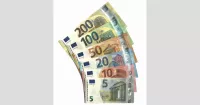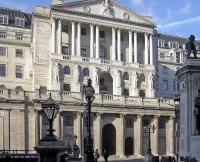Money serves as a universally accepted medium for exchanging goods and services, settling debts, and measuring economic value. Its core functions include acting as a medium of exchange, providing a standard unit of account, enabling the storage of value over time, and occasionally serving as a benchmark for deferred payments. In essence, money simplifies transactions and facilitates economic activity within a defined region or socio-economic system.
1900: Gold Standard Adopted by Industrializing Nations
By 1900, most of the industrializing nations were on some form of a gold standard, with paper notes and silver coins constituting the circulating medium.
1919: Jevons's Four Functions Summarized
By 1919, William Stanley Jevons's four functions of money (a medium of exchange, a common measure of value, a standard of value, and a store of value) were summarized in a couplet.
1971: US suspends dollar-gold convertibility
In 1971, the U.S. government suspended the convertibility of the dollar to gold, leading many countries to de-peg their currencies from the U.S. dollar. This marked a shift towards fiat currencies unbacked by physical commodities.
1971: United States Breaks Away from Gold Standard
In 1971, the United States was one of the last countries to break away from the gold standard, contributing to the global shift towards floating fiat currencies.
1990: Electronic Money Transfer in the US
By 1990, all money transferred between the central bank and commercial banks in the United States was in electronic form, marking a significant step in the digitization of money.
2002: Euro Counterfeiting
Since the launch of the Euro in 2002, there has been significant counterfeiting of Euro banknotes and coins, although considerably less than for the U.S. dollar.
2008: Bitcoin Introduced
In 2008, Bitcoin was conceived, introducing a decentralized currency that requires no trusted third party.
2012: Electronic Transactions Reach 58% in Some Countries
In 2012, electronic transactions accounted for 20 to 58 percent of transactions, depending on the country, indicating the increasing dominance of digital currency.
Trending

6 months ago Aaron Rodgers and Mike Tomlin: An Unlikely Collaboration in Pittsburgh?

Chevy Chase born Cornelius Crane Chase is a prominent American comedian actor and writer His career took off with his...
5 months ago SharePoint Server Hackers Employ Ransomware; Microsoft Disrupts Exploitation of Vulnerabilities

2 months ago Justin Tucker's NFL Suspension Ends; Potential Teams Include Packers, Rams, and Falcons.
Katherine LaNasa is an American actress known for her role as Nurse Dana Evans in the HBO Max medical drama...

Raheem Morris is an American professional football coach currently serving as the head coach for the Atlanta Falcons He has...
Popular

Stranger Things created by the Duffer Brothers is a popular...

XXXTentacion born Jahseh Dwayne Ricardo Onfroy was a controversial yet...

Kelsey Grammer is an accomplished American actor producer and singer...

Candace Owens is an American conservative political commentator and author...

Bernie Sanders is a prominent American politician currently serving as...

Melania Trump a Slovenian-American former model has served as First...


